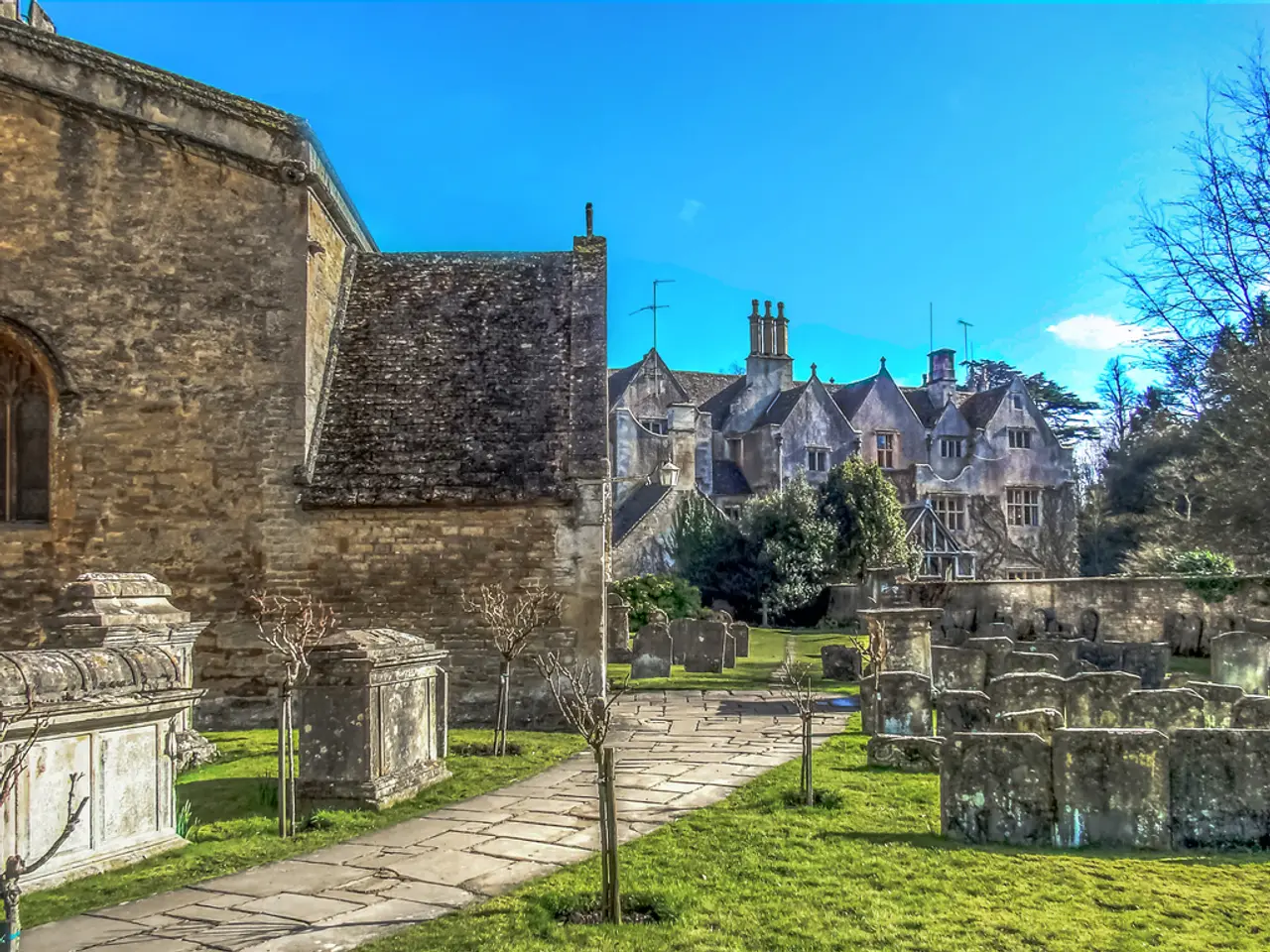A trailblazer or groundbreaking individual
In the heart of Davis, California, a unique community thrives – Muir Commons. Completed in the early 1990s, this 1.2-hectare plot of land is home to 26 families, approximately 75 people, who have chosen to live in this intentional community.
The community, established in 1989, was the first of its kind to be completed in the U.S. It was the brainchild of architect Charles Durrett, inspired by similar experiences in Denmark. Durrett aimed to create a multigenerational living environment with environmental consideration.
The community consists of 26 two-story houses arranged around a winding path. Among these homes, you'll find a large building that includes a children's play area, a yoga room, a guest room, and a vast kitchen for communal meals.
Alex Cooke, one of the residents, oversees the community's tools, outdoor equipment, and green space maintenance in a large garage. Cooke moved into Muir Commons with his wife before they had children. Their children grew up in this nurturing environment, gaining confidence from the community and being comfortable interacting with adults.
However, Muir Commons is not without its challenges. Disputes have arisen over various issues, such as the installation of a play module and philosophical differences about child rearing. These disagreements have at times led to broken friendships within the community.
Ann Bartholomew warns that Muir Commons may not be suitable for individuals who hold grudges. She emphasises that residents are expected to invest several hours a week in community life, participating in activities and decisions. This sets intentional communities like Muir Commons apart from tightly-knit neighbourhoods.
Despite these challenges, the sense of community endures at Muir Commons. Ben Finkelor, another resident, mentions that communal meals used to occur two or three times a week but have decreased to once a week or every two weeks due to COVID-19.
The COVID-19 pandemic posed challenges for the small community due to differing opinions about health measures. However, residents share meals, activities, and responsibilities, but are not obliged to share the same political opinions.
One resident, Eugen Dunlap, moved in with his family in 1991 after hearing about the Muir Commons community project. He expresses a desire for Muir Commons to be self-sufficient in energy. He moved back to Muir Commons when his wife showed signs of dementia as it provided a more secure environment for her.
Rhonda David, another resident, finds it demanding for couples with young children to participate in all community activities. However, she acknowledges the benefits of the community environment, particularly for her children who were allowed to play with children of all ages without age segregation.
The organization behind the Muir Commons project in Davis, California, is the Sierra Club, an American environmental organization founded by John Muir and others to protect natural areas like the Sierra Nevada and Yosemite.
Though not without its trials, Muir Commons remains a testament to the power of community living. It stands as a vibrant example of an intentional community that values environmental responsibility, multigenerational living, and a strong sense of community.
Read also:
- Peptide YY (PYY): Exploring its Role in Appetite Suppression, Intestinal Health, and Cognitive Links
- Toddler Health: Rotavirus Signs, Origins, and Potential Complications
- Digestive issues and heart discomfort: Root causes and associated health conditions
- House Infernos: Deadly Hazards Surpassing the Flames








